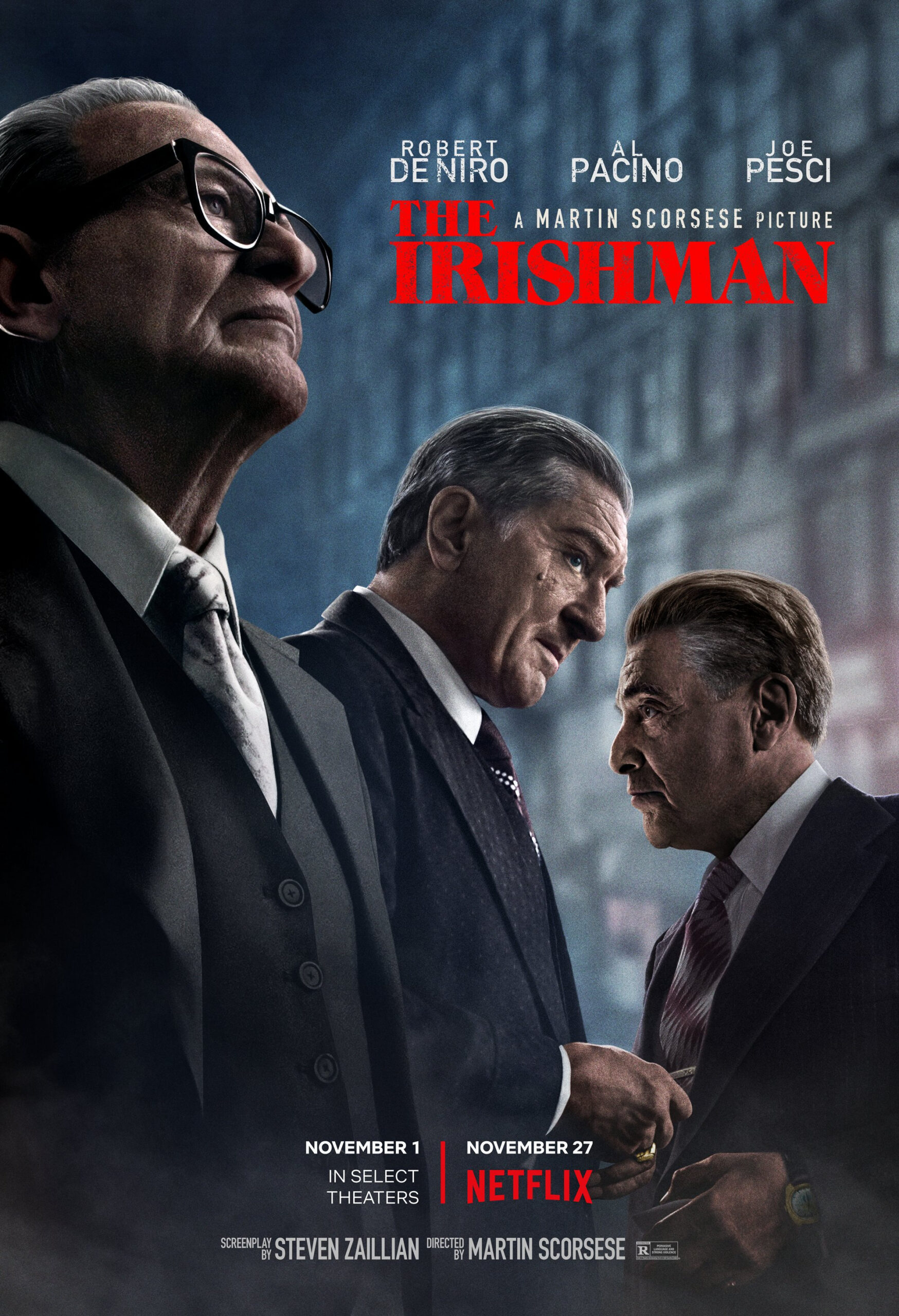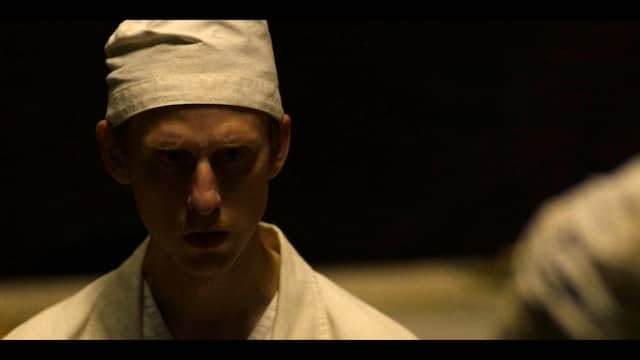“The Irishman” (2019): Film Review

Martin Scorsese’s “The Irishman,” released in 2019, is a sprawling epic that delves into the life of Frank Sheeran (Robert De Niro), a truck driver turned hitman for the mob, and his intricate connections with mob boss Russell Bufalino (Joe Pesci) and Teamsters leader Jimmy Hoffa (Al Pacino). The film is not only a narrative about crime, loyalty, and betrayal but also an introspective look at aging, legacy, and the passage of time.
Narrative and Character Exploration
“The Irishman” is based on Charles Brandt’s book “I Heard You Paint Houses,” which chronicles Frank Sheeran’s life and his alleged involvement in the disappearance of Jimmy Hoffa. Scorsese, through a meticulously structured narrative, crafts a film that spans several decades, utilizing extensive flashbacks to weave the complex tapestry of Sheeran’s life. This nonlinear narrative structure allows the audience to journey through the pivotal moments of Sheeran’s career as a mob hitman and his relationship with key figures in the criminal and labor spheres.
The performances in “The Irishman” are monumental. De Niro’s portrayal of Sheeran is a study in subtlety and depth, capturing the internal conflicts and moral ambiguity of his character. Pesci’s return to the screen as Russell Bufalino is both understated and powerful, showcasing a different side of the actor known for his explosive performances. Al Pacino, as Hoffa, delivers a dynamic and compelling performance, embodying Hoffa’s charisma, stubbornness, and tragic trajectory.
Behind the Scenes: A Technological and Directorial Feat
One of the most talked-about aspects of “The Irishman” is its use of de-aging technology. Scorsese, partnering with Industrial Light & Magic (ILM), employed sophisticated visual effects to portray the lead characters across different time periods without the need for younger actors. This technology was pivotal in realizing Scorsese’s vision of a seamless narrative that could convincingly depict the characters over several decades.
The production of “The Irishman” was a monumental undertaking, with Scorsese and cinematographer Rodrigo Prieto creating a visual style that complements the film’s thematic concerns. The color palette, lighting, and camera movements are carefully designed to reflect the evolving eras and the internal states of the characters. The meticulous attention to period detail in the production design, costume design, and locations contributes to the film’s authenticity and immersive quality.
Thematic Depth: Morality, Mortality, and Memory
At its core, “The Irishman” is a meditation on mortality and the choices that define a life. The film’s reflective tone is underscored by its exploration of aging, the cost of loyalty, and the elusive nature of redemption. Scorsese, through this introspective narrative, examines the impact of a life lived in the shadows of power and violence, and the inevitable reckoning that comes with time.
The film’s portrayal of historical events and figures, while anchored in factual accounts, is imbued with a sense of ambiguity and introspection. This approach allows “The Irishman” to transcend the boundaries of traditional biographical crime dramas, offering a nuanced and reflective exploration of its characters and their place in history.
Cinematic Craftsmanship and Storytelling Prowess
“The Irishman” showcases Scorsese’s directorial prowess, blending his signature dynamic storytelling with a more contemplative narrative rhythm that reflects the film’s themes of aging and reflection. The film’s pacing, often leisurely and deliberate, allows the audience to fully engage with the complex world of its characters, emphasizing the passage of time and the weight of history.
Scorsese’s collaboration with longtime editor Thelma Schoonmaker is critical in shaping the film’s narrative flow. Their editing choices, particularly in the cross-cutting between different timelines, enhance the storytelling, creating a tapestry of interconnected events and relationships that define Sheeran’s life and legacy.
Music and Sound Design: Enhancing the Narrative
The film’s sound design and music selection play a significant role in establishing mood and period. Scorsese, known for his eclectic and poignant use of music, utilizes a soundtrack that spans various decades, enhancing the film’s historical authenticity and emotional resonance. The music not only serves as a backdrop to the action but also as a commentary on the characters’ journeys and the eras they inhabit.
Historical Context and Realism
While “The Irishman” delves into the criminal underworld and political machinations of the 20th century, it does so with a keen eye for historical context and realism. The film’s portrayal of events like the Bay of Pigs Invasion, the Kennedy assassination, and Hoffa’s union activities is grounded in extensive research, offering a window into the complex interplay between organized crime, politics, and labor movements in post-war America.
The attention to detail in the set design, costumes, and props further immerses the viewer in the film’s historical periods, creating a believable and lived-in world that enhances the narrative’s authenticity and impact.
Impact
Since its release, “The Irishman” has been lauded for its ambitious scope, technical achievements, and the powerful performances of its lead actors. The film not only adds a significant chapter to Scorsese’s exploration of crime, power, and morality but also stands as a reflective work that contemplates the passage of time and the end of an era, both for its characters and the generation they represent.
Critically, “The Irishman” has been analyzed not just as a narrative about crime and punishment but as a profound statement on the human condition, marked by Scorsese’s mature directorial hand and the weighty performances of its cast. The film’s lengthy runtime, initially a point of contention, has come to be seen as essential to its detailed storytelling and thematic depth.
In the landscape of American cinema, “The Irishman” is both a culmination of Scorsese’s longstanding fascination with the lives of flawed men navigating morally complex worlds and a testament to the director’s evolving narrative and thematic concerns. It stands as a reflective, elegiac piece that interrogates the myths of the American dream, the costs of loyalty and ambition, and the inescapable march of time.




